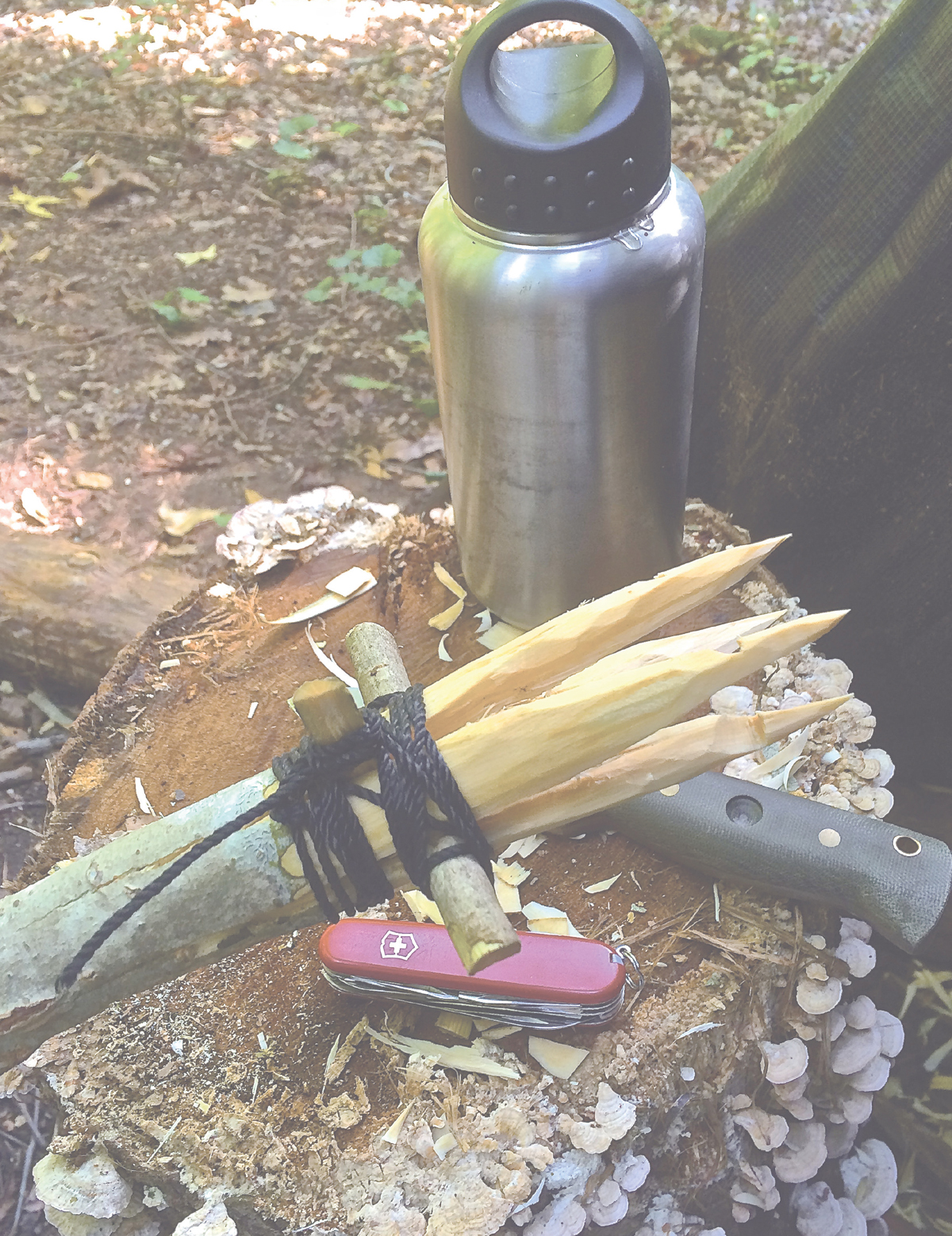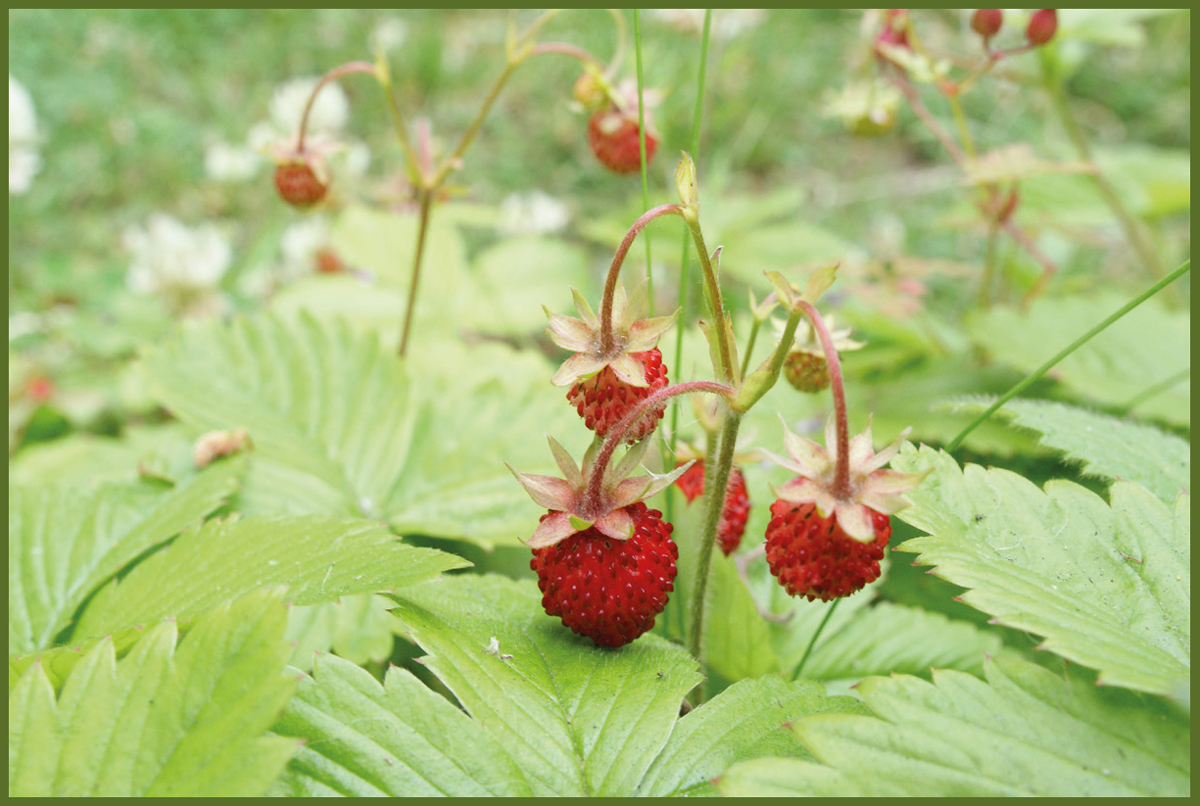


 This book is dedicated to Uncle Dan Beard. His books on outdoor skills for boys led to long afternoons of outdoor adventuring and indoor daydreaming, and he inspired thousands of American boys, myself included. His books and my scouting experiences shaped the man I am today. Copyright 2019 by David Nash Black and white illustrations copyright 2019 by Sarah E. Cole All rights reserved. No part of this book may be reproduced in any manner without the express written consent of the publisher, except in the case of brief excerpts in critical reviews or articles.
This book is dedicated to Uncle Dan Beard. His books on outdoor skills for boys led to long afternoons of outdoor adventuring and indoor daydreaming, and he inspired thousands of American boys, myself included. His books and my scouting experiences shaped the man I am today. Copyright 2019 by David Nash Black and white illustrations copyright 2019 by Sarah E. Cole All rights reserved. No part of this book may be reproduced in any manner without the express written consent of the publisher, except in the case of brief excerpts in critical reviews or articles.
All inquiries should be addressed to Skyhorse Publishing, 307 West 36th Street, 11th Floor, New York, NY 10018. Skyhorse Publishing books may be purchased in bulk at special discounts for sales promotion, corporate gifts, fund-raising, or educational purposes. Special editions can also be created to specifications. For details, contact the Special Sales Department, Skyhorse Publishing, 307 West 36th Street, 11th Floor, New York, NY 10018 or . Skyhorse and Skyhorse Publishing are registered trademarks of Skyhorse Publishing, Inc., a Delaware corporation. 10 9 8 7 6 5 4 3 2 1 Library of Congress Cataloging-in-Publication Data is available on file. 10 9 8 7 6 5 4 3 2 1 Library of Congress Cataloging-in-Publication Data is available on file.
Cover design by Tom Lau Print ISBN: 978-1-5107-3772-3 Ebook ISBN: 9781634508421 Printed in China TABLE OF CONTENTS HOW THIS BOOK IS ORGANIZED The first part of this book contains basic information needed to begin learning how to safely forage for and use wild plants. It includes a short introduction, addresses a popularly discussed universal edibility test, and suggests the best use of foraging. It also introduces the reader to commonly used plant parts and botanical descriptions and definitions to help identify plants. The second, longer, part of the book comprises a listing of 35 common plants and trees, their illustrated descriptions, range of habitat, and a description of at least one food and alternative use.  Wild strawberry plant. Courtesy of Arvind (CC BY-SA 3.0).
Wild strawberry plant. Courtesy of Arvind (CC BY-SA 3.0).
FOREWORD When David Nash asked me to write an introduction to his book, I was extremely honored and excited. Im a student who enjoys doing common-sense stuff to become more self-reliant. I like the fact that hes actually doing the stuff in his books, as well as the no-nonsense style of his writing based in humility. His attitude is always that of a student, whether teaching about guns or plants. Knowledge is not enough to get you and your family through hard times when fragile systems fail. As much as wed all like to think that food trucks will always deliver, a small glitch (or a dusting of snow in Georgia) is all it takes for the industrial food machine to grind to a halt.
Not a problem. Youve got food put aside for such occasions... if the trucks start rolling soon. What if they dont? Ive read about many misguided people who plan to live off the land in the backwoods. Thats not what this book is about. David puts that myth to rest right up front.
Foraging from the landscape is a skill meant to supplement your overall food independence plan. But what many foraging books dont give you are alternative uses for wild plants... and trees are rarely mentioned. Trees, my friend, are a four-season meal plan! The more I learn about the natural world, the more I realize just how little I know. There are hundreds of thousands of plant species in nature. In my pursuit of outdoor self-reliance skills, knowledge of the plant world is the foundation of becoming less dependent on others.
Im not a botanist but I do study plants and trees for their uses as food and medicine. However, one of the best value-added aspects of this book has to be the alternative uses of each of the twenty-five plants listed. That alone is worth the price. David also provides some excellent resources to further your journey in wildcrafting. The common-sense advice to seek out a reputable plant forager is wise. Even then, youll need to spend time in the woods or backyard practicing.
I would recommend locating and properly identifying two of the plants or trees each month. In one years time, youll have learned about twenty-four plants and their uses. That would be a huge leap in your journey to self-reliance! Todd Walker Todd Walker, a.k.a. The Survival Sherpa, is an experienced survivalist who runs several websites and Facebook groups dedicated to wilderness survival and bushcraft. INTRODUCTION As I wrote in the introduction to the first edition of the Preppers Guide to Foraging, my childhood was deeply influenced by having a state park ranger as a father, and living in the middle of a large state park. I spent countless happy hours as a boy reading old outdoor handbooks from the turn of the century, camping, and discovering for myself the rewards of being able to take care of myself.
My mentors and those experiences guided me and allowed me to develop the basic skills I use today as an author, experimenter, and self-reliance advocate. With the positive reception of the original book, I took even more time to add plants, recipes, and projects. Also based on the audience, much of the medical references were removed to make room for more family-orientated projects. Almost without exception, any of the projects and recipes in this book could be completed by the average middle school aged child with a little parental supervision. That was done intentionally, as I find great satisfaction in sharing time with my son giving him the same gift of freedom to experiment and learn that my parents gave me. For me, books are a great way to learn and are fuel for the imagination, but in writing a book like this I am reminded of my favorite childhood hero, 15-year-old Sam Gribley from My Side of the Mountain.
Sam hated living in a cramped city apartment, so he used his library card to learn survival skills and ran away to the mountains. He nearly gave up on his first night because books alone cant teach survival skills. Outdoor skills should be learned in the outdoors.  Ostrich fern fiddleheads and wild leeks. Before using plants found in the wild, please ensure they are the actual plants you are trying to eat. There are many plants that look alike; some are edible and some are not.
Ostrich fern fiddleheads and wild leeks. Before using plants found in the wild, please ensure they are the actual plants you are trying to eat. There are many plants that look alike; some are edible and some are not.
I spent many hours learning these skills as a child, and many more ensuring this book correctly illustrates the plants, but I cannot guarantee that a photograph can correctly depict a live plant in the wild. Never rely on a single book to identify wild edibles, and if possible, always get advice from a local expert.  Staghorn sumac shoots and fruit clusters from last year. In my work as a professional emergency manager and a disaster preparedness educator, I constantly hear from people that planning to head for the hills and live off the land in a disaster. As we will discuss later, I just dont think this plan makes sense. There is simply not enough wild land available for everyone to go back to a hunter-gatherer lifestyle.
Staghorn sumac shoots and fruit clusters from last year. In my work as a professional emergency manager and a disaster preparedness educator, I constantly hear from people that planning to head for the hills and live off the land in a disaster. As we will discuss later, I just dont think this plan makes sense. There is simply not enough wild land available for everyone to go back to a hunter-gatherer lifestyle.
Next page














 This book is dedicated to Uncle Dan Beard. His books on outdoor skills for boys led to long afternoons of outdoor adventuring and indoor daydreaming, and he inspired thousands of American boys, myself included. His books and my scouting experiences shaped the man I am today. Copyright 2019 by David Nash Black and white illustrations copyright 2019 by Sarah E. Cole All rights reserved. No part of this book may be reproduced in any manner without the express written consent of the publisher, except in the case of brief excerpts in critical reviews or articles.
This book is dedicated to Uncle Dan Beard. His books on outdoor skills for boys led to long afternoons of outdoor adventuring and indoor daydreaming, and he inspired thousands of American boys, myself included. His books and my scouting experiences shaped the man I am today. Copyright 2019 by David Nash Black and white illustrations copyright 2019 by Sarah E. Cole All rights reserved. No part of this book may be reproduced in any manner without the express written consent of the publisher, except in the case of brief excerpts in critical reviews or articles. Wild strawberry plant. Courtesy of Arvind (CC BY-SA 3.0).
Wild strawberry plant. Courtesy of Arvind (CC BY-SA 3.0). Ostrich fern fiddleheads and wild leeks. Before using plants found in the wild, please ensure they are the actual plants you are trying to eat. There are many plants that look alike; some are edible and some are not.
Ostrich fern fiddleheads and wild leeks. Before using plants found in the wild, please ensure they are the actual plants you are trying to eat. There are many plants that look alike; some are edible and some are not. Staghorn sumac shoots and fruit clusters from last year. In my work as a professional emergency manager and a disaster preparedness educator, I constantly hear from people that planning to head for the hills and live off the land in a disaster. As we will discuss later, I just dont think this plan makes sense. There is simply not enough wild land available for everyone to go back to a hunter-gatherer lifestyle.
Staghorn sumac shoots and fruit clusters from last year. In my work as a professional emergency manager and a disaster preparedness educator, I constantly hear from people that planning to head for the hills and live off the land in a disaster. As we will discuss later, I just dont think this plan makes sense. There is simply not enough wild land available for everyone to go back to a hunter-gatherer lifestyle.